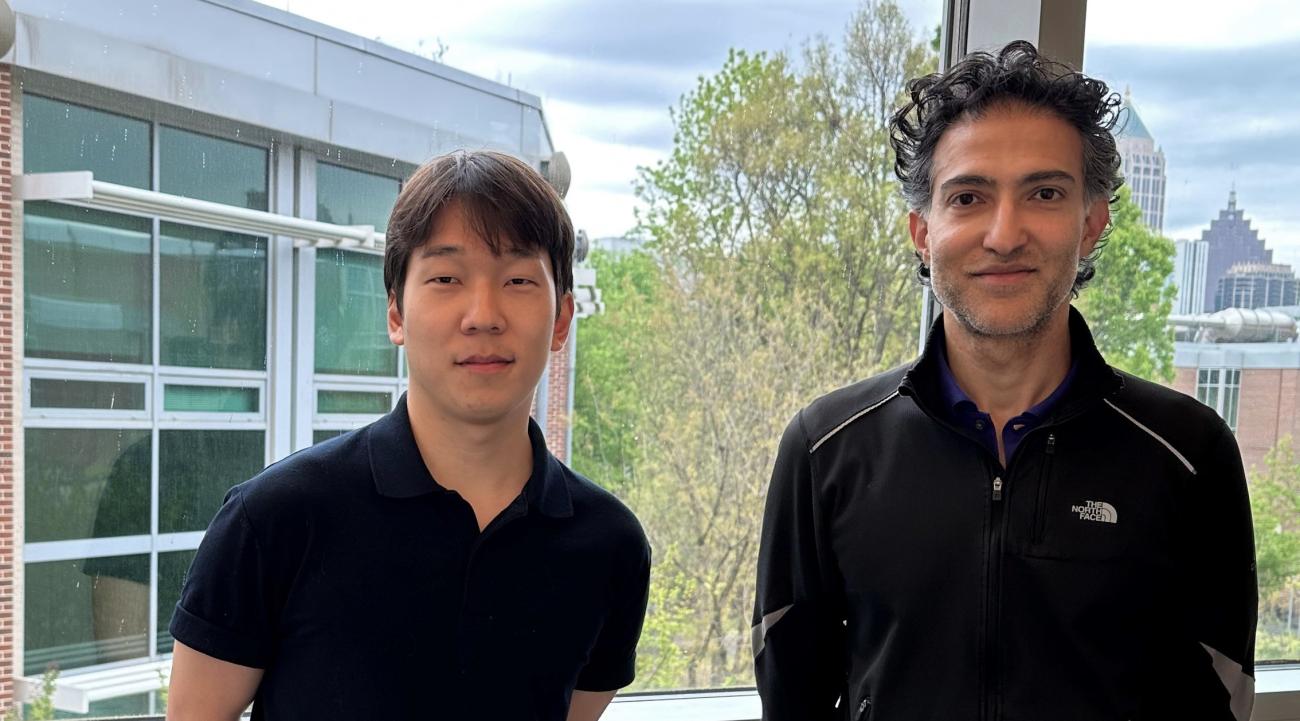By Jerry Grillo
About half of the brain is devoted in some way to vision. Our eyes observe the visual field, and that information is sent to the back of the brain, where it is processed. Then very quickly – almost instantaneously – we recognize the objects in front us. And we can shake the hand of an approaching friend, or we can move out of the way of oncoming traffic.
It’s lot to take in. All that precise recognition in a single glance takes an enormous amount of computation and synchronization. Driving this activity are neurons firing and communicating across the vast space between our ears so we can focus quickly and reliably on the right features. How all this complicated collaboration comes together is not entirely understood.
But a team of Georgia Tech researchers trying to solve the mystery has discovered an internal “clock” that timestamps and synchronizes visual computation across different areas of the brain. The results of their studies help explain the remarkable precision of visual processing in a healthy brain. Their findings also suggest new ways to think about brain activity when visual perception is neurologically impaired.
“It’s like what happens in a computer chip,” said Bilal Haider, assistant professor in the Wallace H. Coulter Department of Biomedical Engineering, whose lab published their work recently in the journal Neuron. “All the instructions from open apps and software have to flow in a precise sequence so messages don’t get scrambled – and so your apps don’t crash!”
Electrified silicon chips are super-fast, so in a computer, the clock stamps and runs instructions millions of times a second. Haider and his team found that the visual processing clock, made of wet, squishy neurons, does pretty good, too.
“We found that the visual system runs instructions 60 times a second and makes sure each cycle of the clock is precisely timed across multiple visual regions of the brain,” Haider said. “We suspect that desynchronizing this clock could potentially underlie all sorts of visual processing deficits, which could mean scrambled, jumbled visual messages.”
Narrowing the Frequency
Neurons work well together when one group sends a message, and the other group is standing ready to receive it. Rhythmic brain oscillations are thought to play a key role in this process of communication and computation.
EEG-based neural oscillations are often observed in neurological diseases, noted the study’s lead author, Donghoon Shin, “but the specific function of neural oscillations remains an open question. Our paper provides a fascinating example at the intersection of neural oscillation, cooperation between brain areas, temporal coding, and visual perception.”
Shin, who was a graduate student in the Haider lab during the research, led the examination of narrowband gamma (NBG) oscillation, focusing on the relationship between oscillation timing and visual function.
Oscillations occur at different frequencies in the brain, with higher frequency gamma oscillations controlling communication between different regions of the brain. Previous studies of the visual system have proposed that broadband gamma oscillations facilitate brain-wide signal coordination underlying visual perception.
But the broadband frequency between different brain areas varies widely and doesn’t seem to provide the precise synchronization needed for optimum neural activity. Shin, Haider, and team performed new experiments that demonstrate how NBG oscillations can propagate and synchronize throughout an awake brain’s visual system with great precision.
The consistent rate of NBG oscillations (between 55 to 65 times per second, versus 30 to 80 times for broadband gamma) makes it easier for different brain areas to sync up, Shin said.
“More broadly, NBG oscillations across brain areas might be a way to ‘pay attention’ to the right features or locations for effective visual behavior,” Haider said. “So, a next step in the research would be to test the NBG clock, to see how it might be altered in neurological conditions where visual behavior is impaired and try to figure out if we need to ‘reset’ the visual clock to help improve behavior or attention.”
CITATION: Donghoon Shin, Kayla Peelman, Joseph Del Rosario, Bilal Haider. “Narrowband gamma oscillations propagate and synchronize …” Neuron https://doi.org/10.1101/2022.05.19.491028
Latest BME News
Jo honored for his impact on science and mentorship
The department rises to the top in biomedical engineering programs for undergraduate education.
Commercialization program in Coulter BME announces project teams who will receive support to get their research to market.
Courses in the Wallace H. Coulter Department of Biomedical Engineering are being reformatted to incorporate AI and machine learning so students are prepared for a data-driven biotech sector.
Influenced by her mother's journey in engineering, Sriya Surapaneni hopes to inspire other young women in the field.
Coulter BME Professor Earns Tenure, Eyes Future of Innovation in Health and Medicine
The grant will fund the development of cutting-edge technology that could detect colorectal cancer through a simple breath test
The surgical support device landed Coulter BME its 4th consecutive win for the College of Engineering competition.








